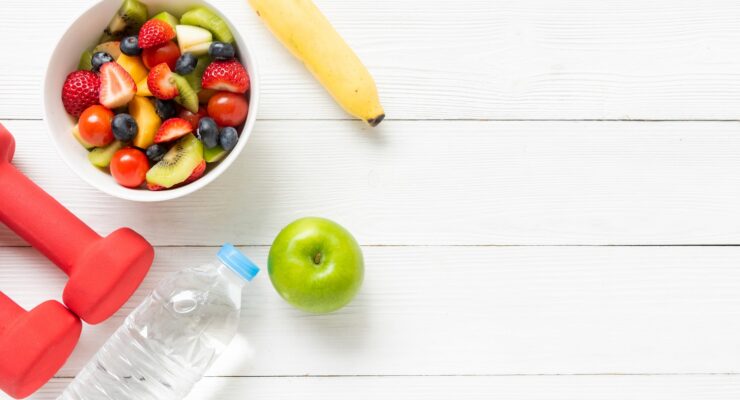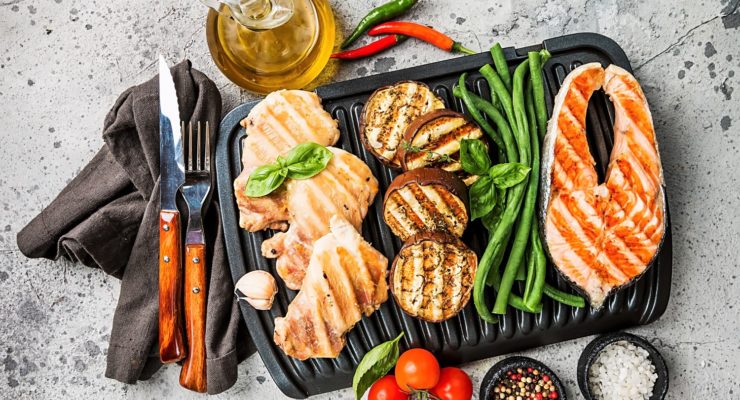How to Store Your Produce the Right Way
Article posted in: Lifestyle
Fresh fruits and vegetables are superheroes of healthy eating because they are so nutrient-dense and low in calories they can help you fight off hunger whenever it strikes. The only challenge: produce is perishable and you want to eat it at its peak of freshness for the best flavor and maximum nutrition. Solution: these tips will help you store fruits and vegetables so that they’re ready for you to enjoy anytime.
Moisture is a villain. When fresh produce gets wet—or even damp—it starts to deteriorate. Don’t wash fruits and veggies until you’re ready to use them. And store them loosely (not jammed in tight) in your refrigerator so that air can circulate and keep them dry.
Paper beats plastic. Condensation often forms inside the clear plastic bags found in the produce department of many supermarkets, making the contents soggy. Instead choose paper bags or, better yet, get reusable mesh bags. If plastic bags are your only choice, poke holes in them and remove the twist-ties before putting produce in the refrigerator.
Chill for freshness. The cool temperature inside refrigerators slows the aging of many fruits and veggies. The ideal temperature setting, according to the U.S. Food and Drug Administration, is 40 degrees Fahrenheit. These items stay fresh longest when stored in the low-humidity crisper drawer of your fridge: lettuce, spinach and other leafy greens, all kinds of berries, cherries, broccoli, celery, cauliflower, cucumbers, green beans, sweet peppers, zucchini and summer squash.
The asparagus exception. While moisture is the enemy of freshness with most items, asparagus lasts longest when you treat it a bit like a bouquet of flowers. That is, cut off the bottom half-inch from each stem and store them all in glass or jar with an inch or so of water. Put the glass in the refrigerator and they’ll keep fresh for a few days more.
Cool spot storage. Apples, potatoes, sweet potatoes, carrots and other roots (such as turnips), pumpkins, winter squashes and watermelons don’t need to take up space in your refrigerator. You can put them in a cardboard box with newspaper to absorb any moisture and store them in a basement, garage that doesn’t freeze or any unheated room for a few weeks until you’re ready to eat them.
On the counter. Tomatoes, eggplant, bananas, citrus fruits, pineapple, mangoes and other tropical fruits begin to lose their flavor and texture when chilled, so they’re better stored at room temperature. Garlic and onions keep for weeks without refrigeration. Avocados, peaches, plums, nectarines, pears and cantaloupe reach their peak of ripeness at room temperature–once they do, you can store them for a few days more in the refrigerator.
The sooner the better. Even ideal storage doesn’t stop the inevitable: the gradual decline of flavor and nutrients. Most produce you find in the supermarket was picked a week or more before you buy it. Try to buy only enough for each week and you’ll always have the freshest fruits and veggies on hand.
QUICK GUIDE
Refrigerator: Lettuce, spinach and other greens, all kinds of berries and cherries, asparagus, broccoli, celery, cauliflower, cucumbers, green beans, sweet peppers, zucchini and summer squash.
Cool room: Apples, carrots, potatoes, parsnips, pumpkins, sweet potatoes, turnips, watermelon, winter squashes.
Countertop: Tomatoes, bananas, citrus fruits, peaches, plums, nectarines, pears, pineapple, mangoes, avocados and cantaloupes.
*Most information take from University of California at Davis Agriculture and Natural Resources Department on 1/7/2016.






